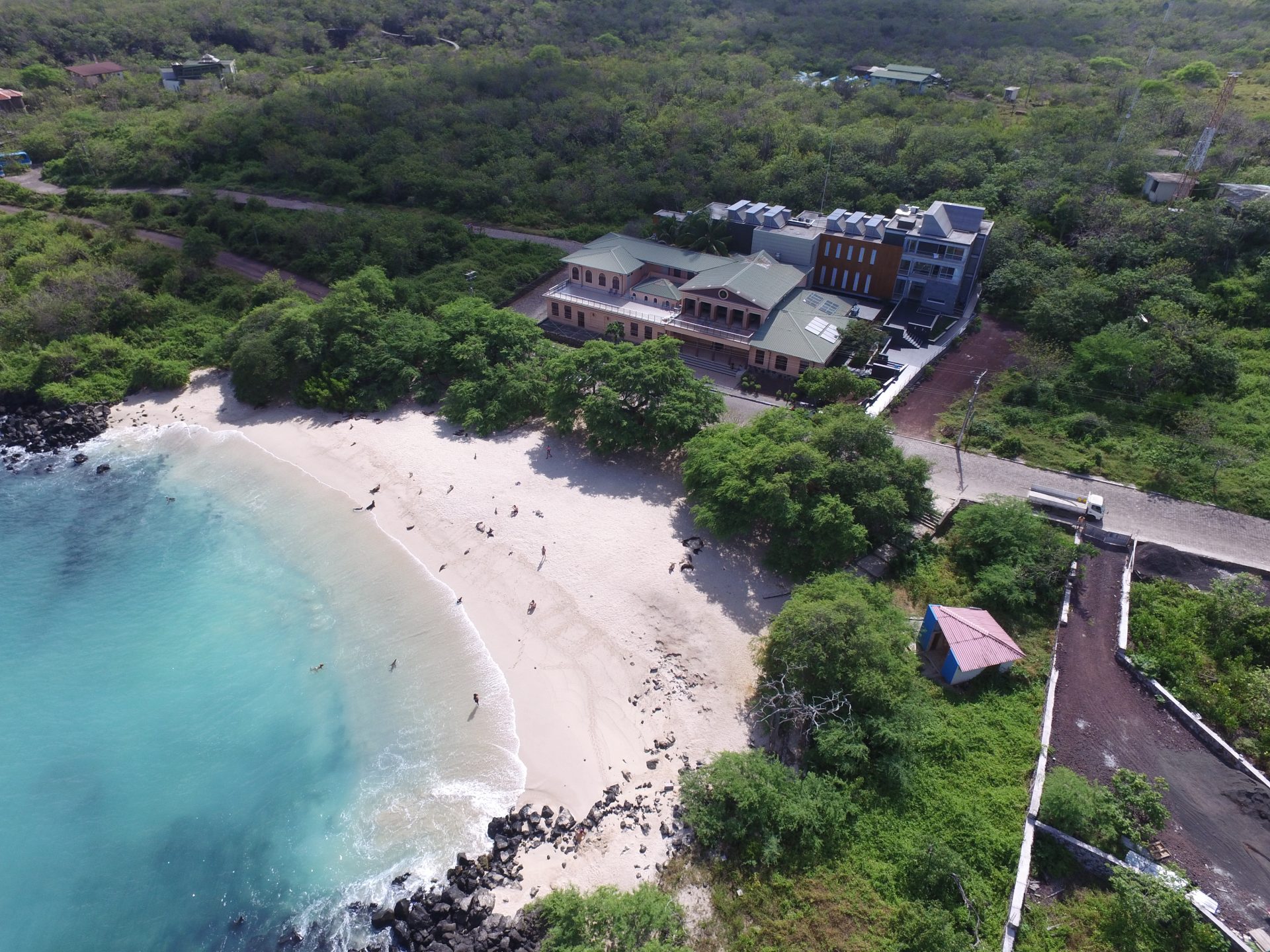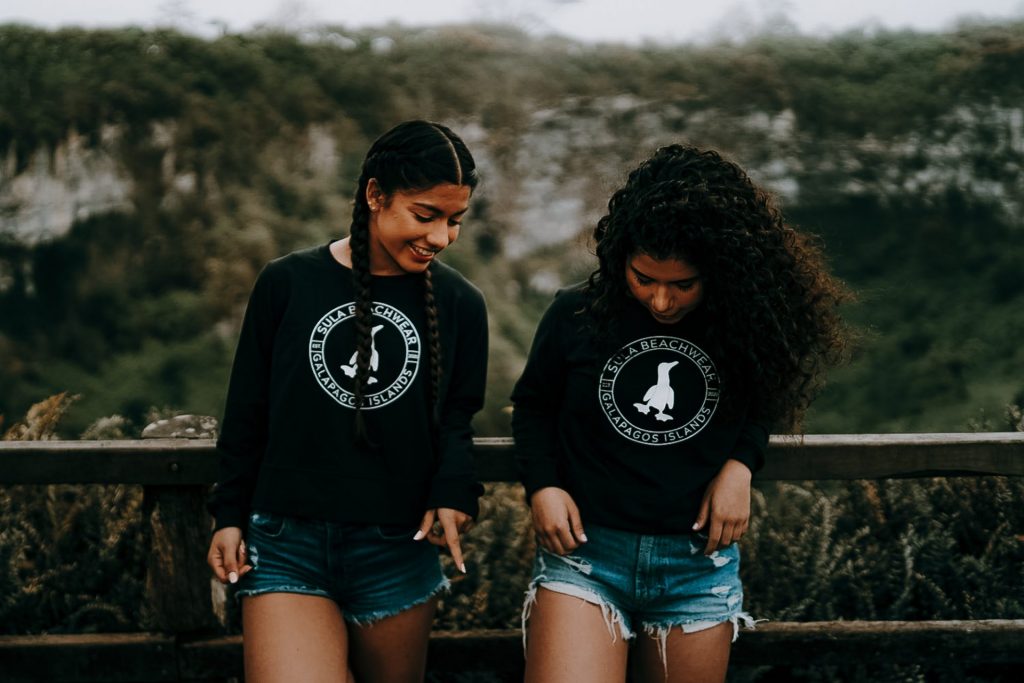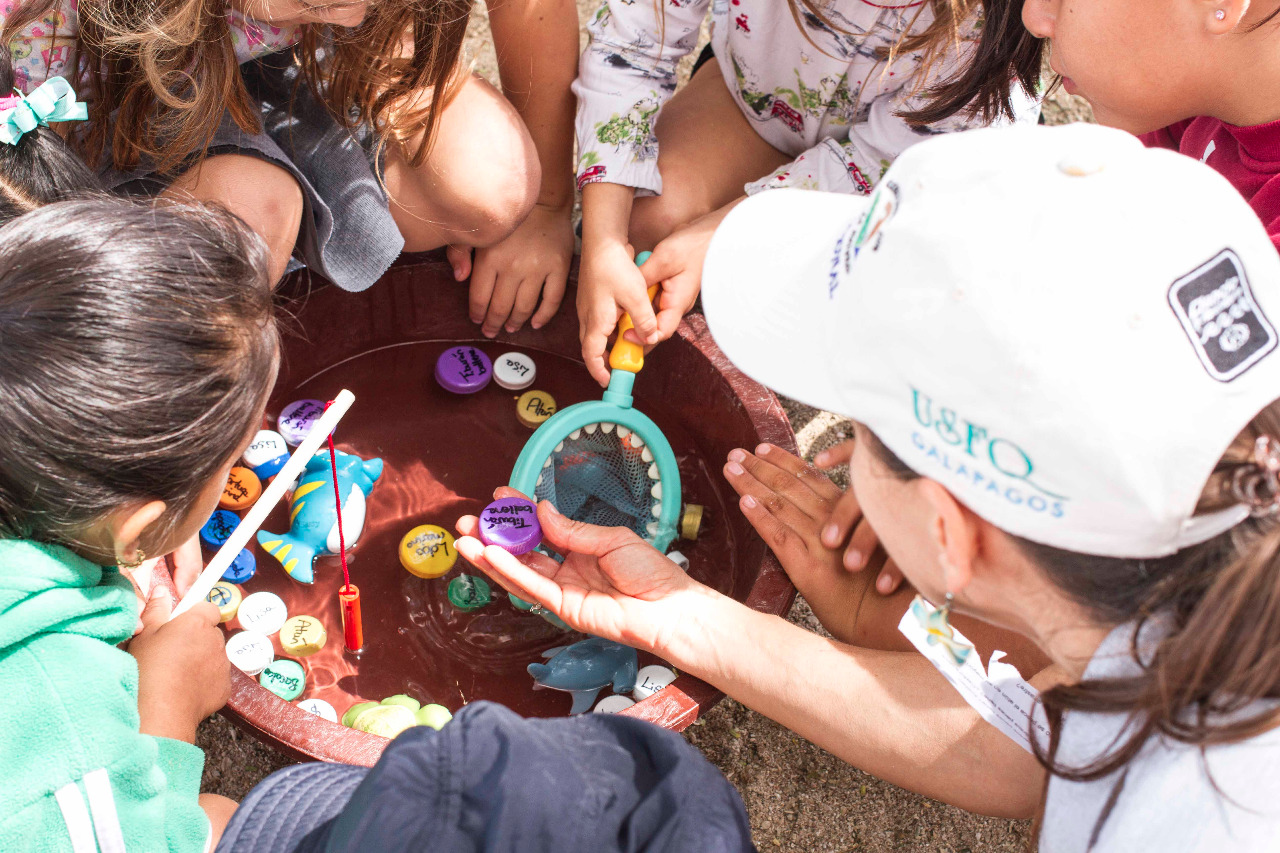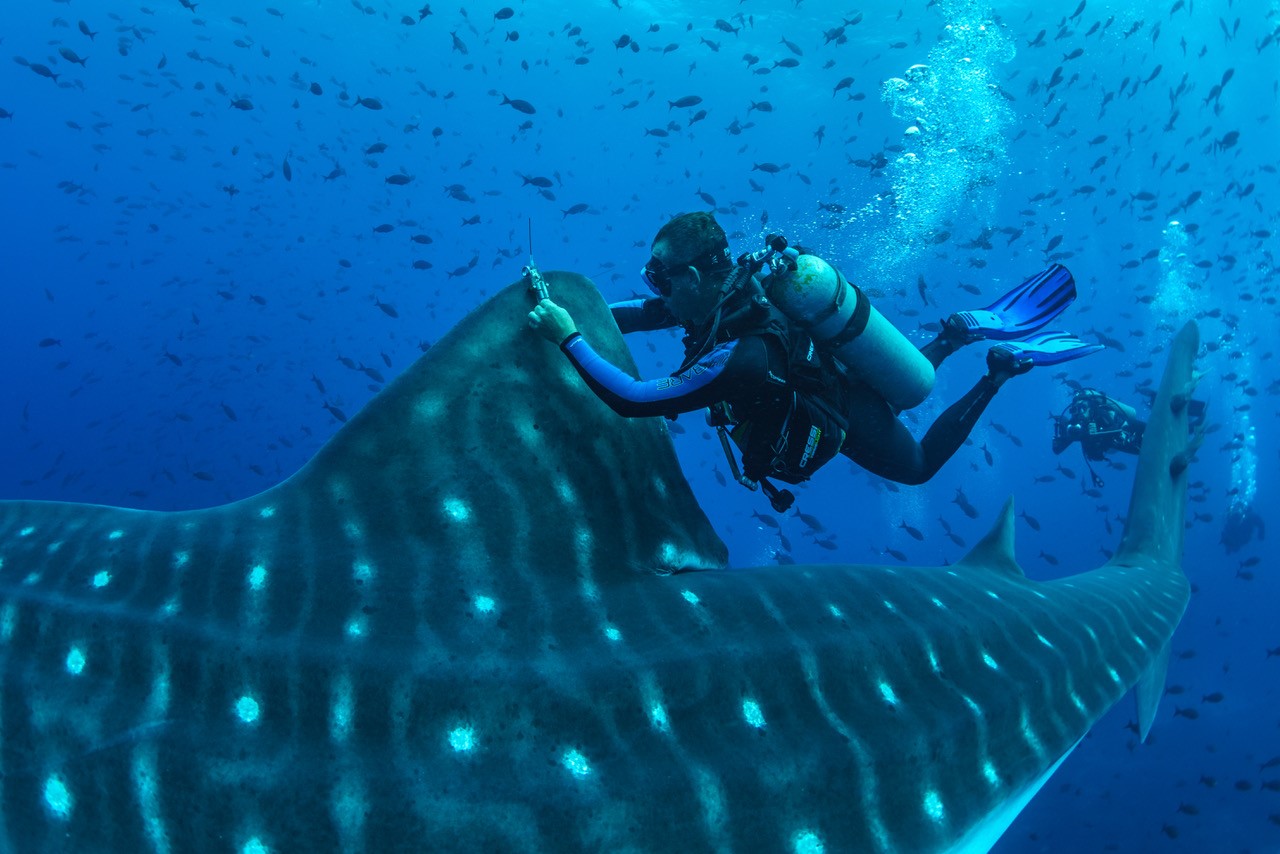In Galapagos, conservation science finds startup solution


Shortly after graduating from Florida State University, Macarena Morillo returned to her home country of Ecuador and started doing what most college graduates do: hunting for a job. But when her job search led Morillo and her sister to begin chasing a lifelong dream – to start their own company that combines their sense of fashion with a love of Ecuador’s Galapagos Islands – she experienced newfound inspiration for using entrepreneurship to support island conservation.
Morillo’s decision to found Sula, a sustainable beachwear brand, was based on a keen observation she made while visiting the Galapagos: local shops lack quality clothing items that tourists need when they go scuba diving, swimming or hiking. She could not find a brand that aligned with her values, so she realized that by creating Sula, she could fill a gap on the island and advance its conservation.
But Morillo knew that by collaborating with another organization, her new company would make an even greater impact on conservation efforts than it could by itself. That insight led Morillo to meet with leaders at The Galapagos Science Center (GSC) – co-founded by the University of North Carolina at Chapel Hill and Universidad San Francisco de Quito – which coordinates scientific research projects between local, national and international scientists to benefit the Galapagos Islands and the world of science.
Leaders of the GSC and Morillo put mutual entrepreneurial thinking into action and forged a new collaboration aimed at helping to preserve the islands. In launching its first collection, Sula will give 20% of its profits back to the GSC, the first and only academic research center in the archipelago.
“We always knew we wanted to donate a part of our profits to conservationist causes, but we were not really sure how to find the right one,” says Morillo. “When you donate to a foundation, sometimes a small percentage goes to the conservation project. So when we saw the Galapagos Science Center, we knew it was the perfect place. We felt connected to its projects, and the students are just amazing.”
An entrepreneurial approach to problem solving
The conservation challenges that the GSC is trying to solve are significant: extreme weather events influenced by climate change, the hazards of newly introduced species and a fast-growing population. Such rapidly evolving concerns call for an entrepreneurial perspective on problem solving, which leaders at GSC embrace through a collaborative approach.
“The sustainability of the Galapagos can only be ensured when all stakeholders take responsibility for the Island’s future,” says Steve Walsh, PhD, co-director of the Galapagos Science Center (UNC) and director of UNC Center for Galapagos Studies. “It is gratifying to see private organizations giving back to the Galapagos Islands through dedicated funds to help ensure an Island future filled with mystery and wonder for all to enjoy.”
Morillo describes Sula’s product line as fashion forward, comfortable and durable, but most importantly, sustainable. Taking its name from the scientific name for the blue-footed booby (seabird), Sula stands behind its tagline “Together we preserve the Galapagos,” and offers products with a tangible purpose. Its first collection creates swimwear and beach towels made of recycled plastic, as well as organic cotton outerwear for men and women.
“We realized how much the world cared about the Galapagos, but there wasn’t a current way to contribute to conservation efforts,” says Morillo. “Our brand has very strict values. Not only are the products made with sustainable fabrics through fair trade, the brand has a bigger purpose. It has the mission to preserve one of the most vital places on earth.”

Collaborating with the business sector on conservation
Founded in 2011 between Carolina and the Universidad San Francisco de Quito (USFQ) in Ecuador, the GSC contributes to sustainable development and increased awareness of the local community in the Galapagos through strong institutional partnerships, annual research expeditions and community outreach. The GSC’s USFQ co-director, Carlos Mena, PhD, who graduated from UNC-Chapel Hill with a doctorate in geography, takes inspiration from the Morillo’s work. Moreover, he’s energized to collaborate with her brand.
“We are looking for solutions on how to tackle solid waste and promote innovative ways to reuse plastics. Through Sula, we are opening our portfolio of activities and collaborating with the business sector,” says, Mena, who is also director of Galapagos Research at USFQ. “It is really rewarding to see it, especially young people, fight to change the status quo.”


With the help of her sister and entrepreneur father, Morillo guides Sula to operate using the circular economy concept: from the factories that transform the plastic bottles into thread and then weave the threads into yarn, to the manufacturer that adds the designs and packages the goods, to the photographer and clothing models, to the Sula team that moves the products out to the consumer, everything is done locally and sustainably in Ecuador.
Initially, Morillo found it challenging to find key partners that aligned with the values and commitment of Sula. But the team was able to kickstart its efforts after winning a $55,000 entrepreneurship grant from the Ecuadorian government. Out of 3,000 projects submitted, Sula was one of only 70 that received the grant, which is focused on innovation. Sula won the grant due to its process of creating sustainable fabric.

“Some days I got discouraged trying to find the right partners and suppliers, but I kept searching. You have to get creative and go door-to-door if necessary to find connections,” says Morillo. “I used to go to the malls to find products I liked to find out who made them. If I saw a piece that was very well done, the next morning I would call them for a meeting.”
The company has developed innovative ways to ensure its environmental footprint on the islands is sustainable, including the way it dyes garments. Traditional garment dyeing processes involve a lot of water and chemical waste. But Sula has worked with a supplier to create a sustainable process that uses less water and recycles that water throughout the entire dying process.
Building community through cooperation
Morillo wants the brand to be more than a clothing line and is working to create a community of brand followers – a community not just interested in clothing but also in conservation efforts for the islands. This innovative mindset by Morillo and the Sula team is what positions them for success.
“The exciting endeavor of entrepreneurship is learning different skills, even though, sometimes it gets overwhelming to start from scratch. When you look back you realize how far you’ve come,” says Morillo. “Entrepreneurship pushes you forward to a better version of yourself.”
Together, the collaboration between GSC and Sula will bolster interdisciplinary research that furthers science and contributes to Galapagos conservation.
“One key component of my training at UNC was the value of cooperation,” says Mena. “Sula has great potential to help us develop products that are good for the environment, and we need to support them.”
In the coming months, Sula will be available for purchase locally in the Galapagos as well as online globally. In the future, Morillo aims to have her own, free-standing store and envisions Sula products sold in different parts of the world, including beach communities in the United States.
To check out Sula’s first collection that will support the GSC, visit www.sulabeachwear.com. You can also find Sula on Instagram, TikTok and YouTube.
Original Source: In Galapagos, conservation science finds startup solution | UNC Innovation & Entrepreneurship | Innovate Carolina | Innovate Carolina



